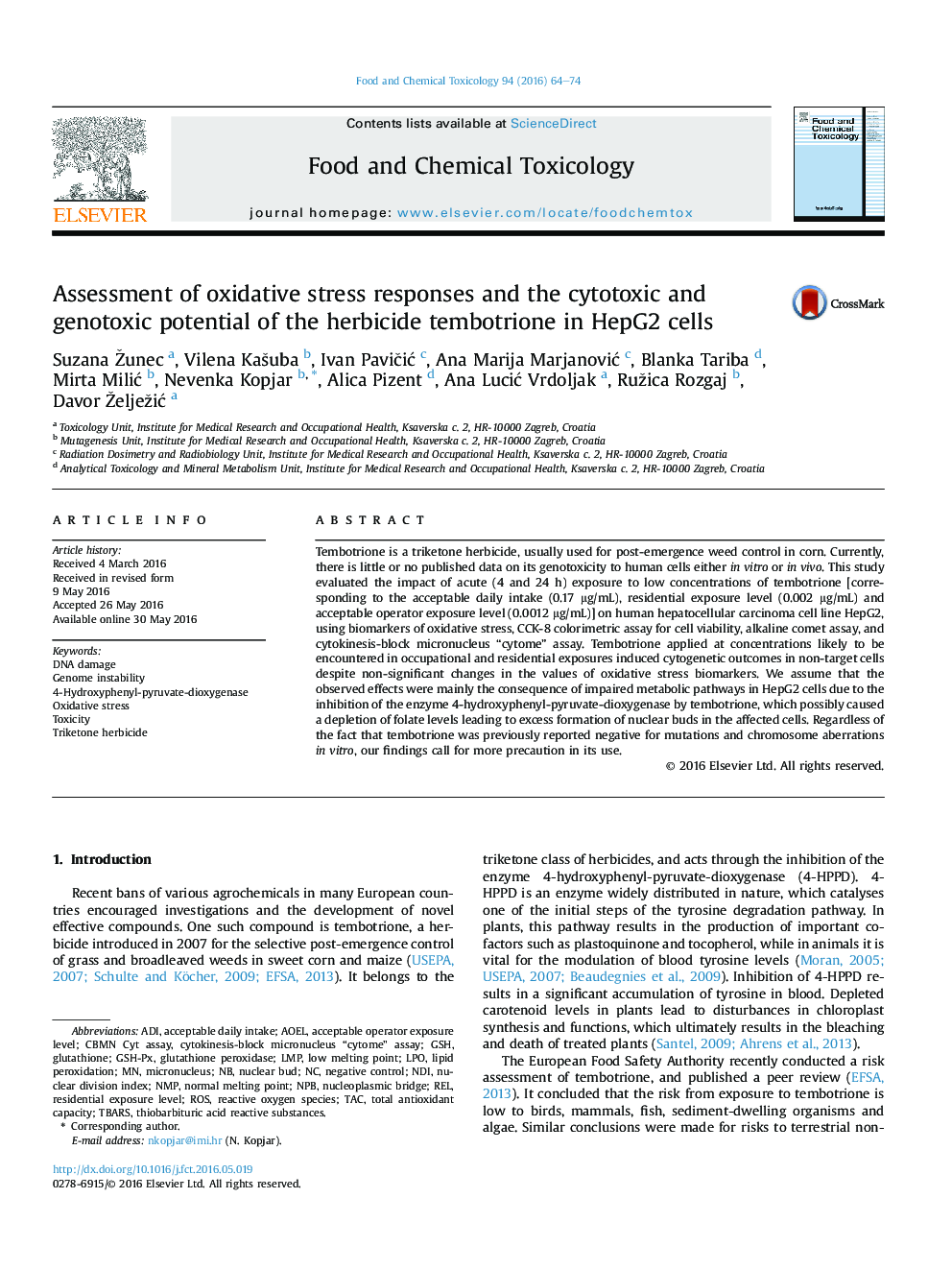| Article ID | Journal | Published Year | Pages | File Type |
|---|---|---|---|---|
| 5849366 | Food and Chemical Toxicology | 2016 | 11 Pages |
â¢The in vitro toxicity profile of tembotrione was studied in HepG2 cells.â¢Most of the oxidative stress markers were not significantly changed.â¢HepG2 viability remained in the physiological range.â¢Tembotrione did not cause significant primary DNA damage.â¢Increased nuclear budding is a matter of concern, and suggests genome instability.
Tembotrione is a triketone herbicide, usually used for post-emergence weed control in corn. Currently, there is little or no published data on its genotoxicity to human cells either in vitro or in vivo. This study evaluated the impact of acute (4 and 24 h) exposure to low concentrations of tembotrione [corresponding to the acceptable daily intake (0.17 μg/mL), residential exposure level (0.002 μg/mL) and acceptable operator exposure level (0.0012 μg/mL)] on human hepatocellular carcinoma cell line HepG2, using biomarkers of oxidative stress, CCK-8 colorimetric assay for cell viability, alkaline comet assay, and cytokinesis-block micronucleus “cytome” assay. Tembotrione applied at concentrations likely to be encountered in occupational and residential exposures induced cytogenetic outcomes in non-target cells despite non-significant changes in the values of oxidative stress biomarkers. We assume that the observed effects were mainly the consequence of impaired metabolic pathways in HepG2 cells due to the inhibition of the enzyme 4-hydroxyphenyl-pyruvate-dioxygenase by tembotrione, which possibly caused a depletion of folate levels leading to excess formation of nuclear buds in the affected cells. Regardless of the fact that tembotrione was previously reported negative for mutations and chromosome aberrations in vitro, our findings call for more precaution in its use.
Graphical abstractDownload full-size image
